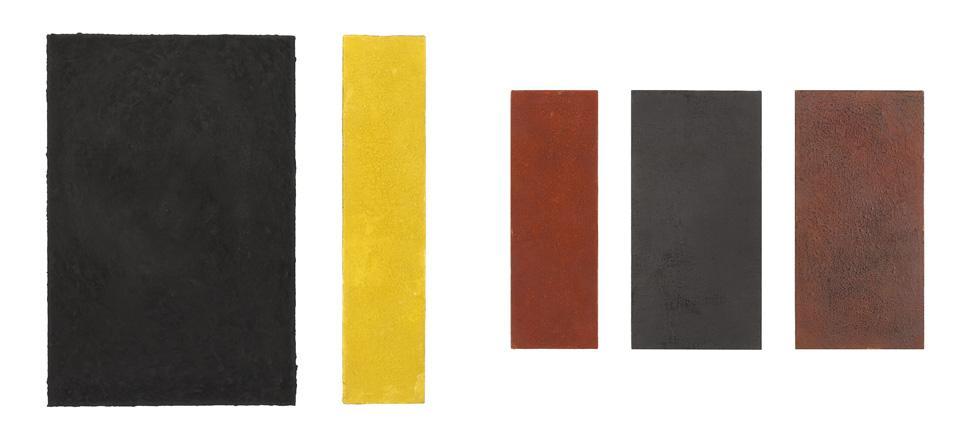Odili Donald Odita
Soft Borders
Odili Donald Odita
Soft Borders, 1999, canvas on wood, acrylic paint, dry pigment, 8 panels, 54 × 12; 54 × 36; 54 × 54; two pieces: 54 × 18; three pieces: 54 × 27 cm
Collection II of the Arsenal Gallery in Białystok. Works donated to the Arsenal Gallery by the artist

Odili Donald Odita, an American artist of Nigerian origin, disclaims the idea of non-figurativeness when commenting on his art, emphasising that any component of any painting may somehow relate to reality as well as to culture. Albeit using aesthetic idioms well-fitted to abstractionism, Odita is nowhere near formalistic imagery. With his artistic concept, he challenges the autonomy of a work of art, postulated at a point by Clement Greenberg and his circle of artists. For Odita a painting is not an autonomous being, but is rather a link in history, aesthetic tradition, and political or social narration. Both the iconographic and material layer – the dye, the binder, the base – may carry specific cultural meanings.
A matter emerging alongside Odita’s process of questioning the abstract is that of his own roots in African heritage. The artist’s multicoloured compositions of elongated and flattened triangles bring to mind a landscape transformed – and references to ornaments on traditional African textiles. Dry pigment painting is a more direct reference to the matter of identity. In Soft Borders, the dye is a parallel to skin pigmentation. Warm colours selected by the artist, frequently associated with African landscape colouring, are the core of numerous metaphorical relations: colour becomes a synonym for skin, skin for a landscape, a landscape for the experience of racial identity.
The metaphor, and the reflection on the aesthetic and conceptual dimension of colour, were both taken to the next level in Body/Space (2000). Against the backdrop of a black wall, Odita placed vertical panels covered with pigments referring to skin colours generally called black. The artist was interested in “blackness” as an abstract idea, in terms of colour and racial context alike. By juxtaposing the general image of blackness against diverse skin pigmentation, he showed the concept and figure of “black” as stereotype-based social constructs.
Izabela Kopania
translated from Polish by Aleksandra Sobczak
.jpg)
.jpg)

PLAN YOUR VISIT
Opening times:
Thuesday – Sunday
10:00-18:00
Last admission
to exhibition is at:
17.30